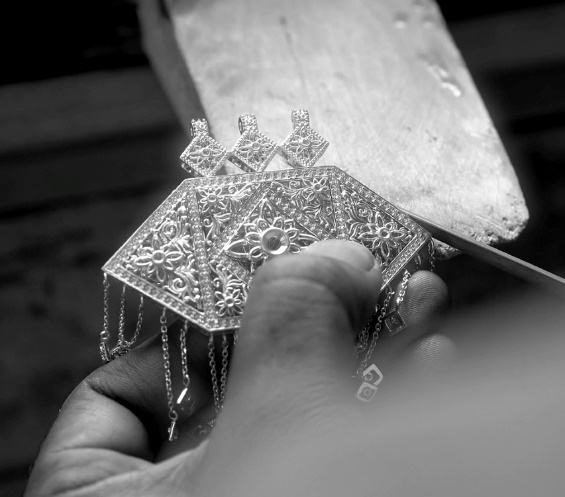For millennia, silver has fascinated people with its attractive and malleable qualities. Silver ore that was initially discovered in Syria, Yemen and the region that is currently Turkey, made its way across the world through trade routes, enabling more and more countries, including Oman, to gain access to this valuable metal.
Nizwa, which was once the capital of Oman in the 6th and 7th centuries AD, was a renowned centre for silver, followed by the wilayats of Rustaq, Ibri and Sur. It was home to skilled silversmiths who designed and melded the metal through traditional handicraft techniques to create high-quality and state-of-the-art ornaments for members of royalty. Each wilayat had its own practices and designs, derived from respective cultures to create pieces that were unique to the region and received widespread acclaim.
Oman’s silver has been considered to be one of the highest in quality and has held prominence in the Arab world. Apart from being used for jewellery and accessories, it was also an integral part of traditional handicrafts, such as perfume bottles, small jewellery boxes, frankincense burners, dallah (traditional Omani coffee) and more. Deemed as heritage pieces, each item possesses inscriptions that are inspired by Islamic designs, Arabic calligraphy or local engravings.
Oman’s culture, heritage and history form its identity and is a way to tell the country’s story to the world. Efforts to preserve this legacy, are exemplified by Oman’s key landmarks and long-standing traditions, both of which are elements of the nation’s pride. This helps shape the values, beliefs and aspirations of the Omani people, allowing the wealth of knowledge and acquired skills to carry on for generations to come.
With its uncompromising quality, Majliya is committed to preserving Oman’s rich legacy of heritage and long-standing traditions. Through all its collections, Majliya endeavours, to create contemporary luxury pieces that embrace different elements of Oman’s traditions and are reshaped to meet the demands of a modern world, while simultaneously being a statement piece for each customer’s identity.
Take a trip to the past with a variety of heritage products and designs, crafted to preserve Oman’s rich history:
Khanjar:
The pride and joy of any Omani man, the khanjar or curved dagger is impressively decorated in silver filigree. Initially, as a status symbol for royalty, it is now a staple part of the national attire for any formal event or official ceremony.
Majmar:
An important part of Omani tradition, incense burners or majmar are considered a regular household item and are the holders used to burn luban or bakhoor that emanate sweet fragrance into the air.
Dallah:
A metal pot specifically for making kahwa or Arabic coffee, marked with various engravings. Traditionally, the pots are handmade, with no two designs being the same and are inscribed with the craftsman’s mark on the spout.
Mandoos:
The mandoos or wooden chest, hold great significance in the daily life of Omanis. Made from the highest quality wood and decorated with carvings or ornamental designs, it was used for storing clothes, jewellery and other valuables.
Camel:
Deeply rooted in Omani culture, the camel has been an animal that contributed to the social status of its owners. Apart from being a means of transport across the country’s deserts, it is an important part of entertainment and festivities, including camel racing.
Browse our collection for our vast selection of silver heritage pieces at https://majliya.com/heritage/collections/
